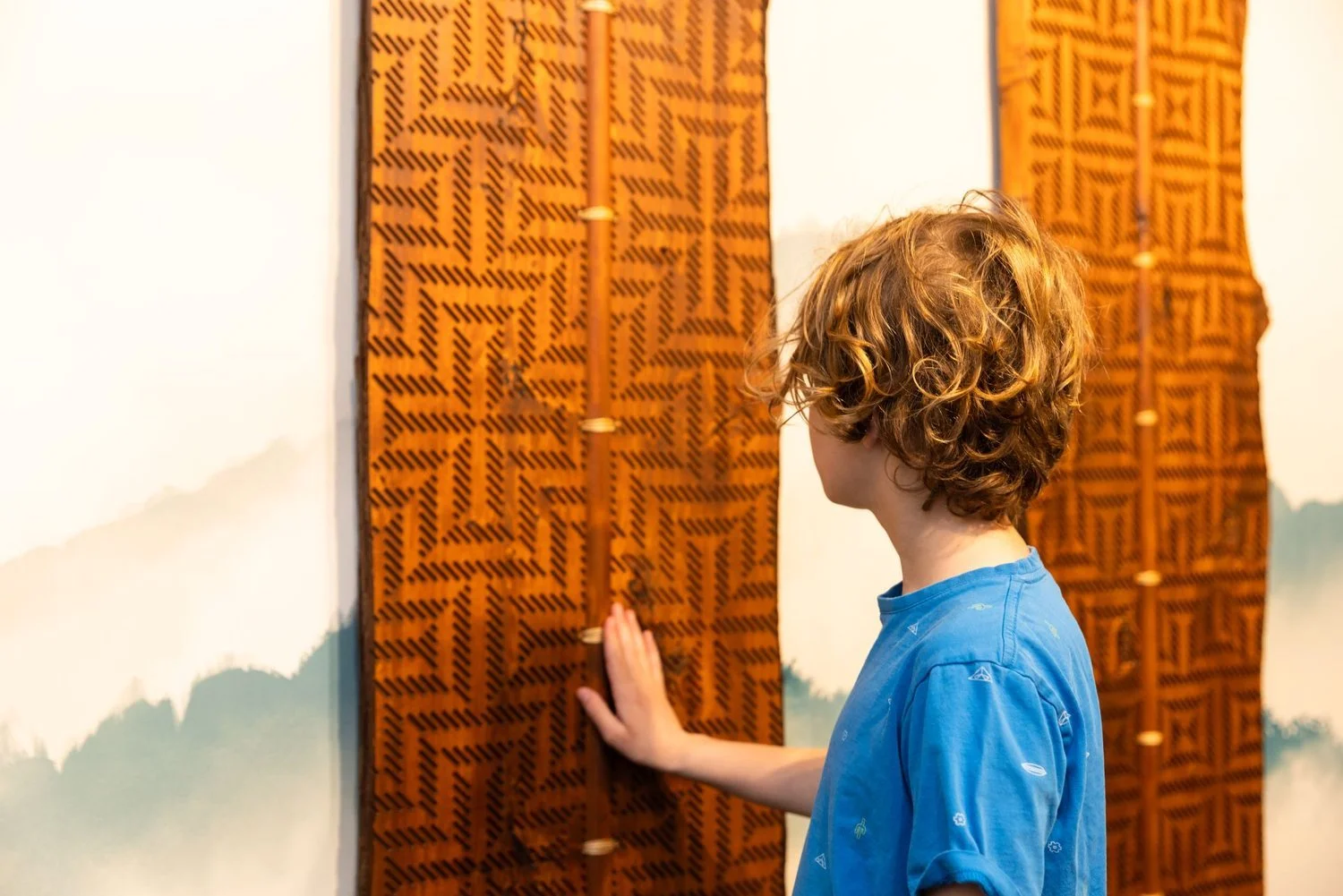Design for learning
John Lott, our senior designer (seen here with his son at Tāne Whakapiripiri, the new visitor centre at Ōtari) is heading to Buenos Aires with his family for the next few years.
As humans, we have evolved to learn. We have an inbuilt drive to make sense of the world around us. Engaging this learning “super power” helps us thrive and grow.
Until quite recently though, many education systems favoured a rigid teacher-centered “transmission model” of learning. In this model, knowledge is to be passively absorbed, with an emphasis on rote learning and the memorisation of facts. Learning is about receiving information from all-knowing teachers and institutions.
In my experience, here in New Zealand it wasn't until the 90s that a more progressive approach really gained traction. Our schools started emphasising a learner-centered approach, with an emphasis on curiosity, questioning and being active rather than passive. Learning finally started to be seen as the creative process that it is, in which ideas and concepts are actively integrated into each individual’s story of how the world works.
This was all slightly too late for me. My own formative years had featured a disastrous series of reports filled with comments like 'unfocused', 'not achieving' and 'disruptive'. It took a long time to realise that I was not the problem, but that the classroom was not designed to engage me as a learner.
Fast-forward 30 years: after many years as a designer, creator, parent, and then retraining as a teacher, it is clear to me that a rigid system of learning works only for a few – with many left behind.
I was very conscious of bringing my thoughts about creating engaging and inclusive learning environments into the design of visitor experiences when I started at Story Inc in 2021.
For me, designing any visitor experience is about creating the best environment for engagement – allowing each visitor to learn in their own unique ways.
A visitor experience can’t just be targeted to a single style of learning, aptitude level, demographic or interest group. It needs to facilitate many different styles, and scaffold support where needed. Spaces need to be designed in an engaging way to excite and surprise, to stimulate conversations, and to allow visitors space and time to decompress and process.
All easier said than done! I feel I have only just started to scratch the surface of possibilities in terms of creating environments that foster learning engagement. The opportunity to work alongside like-minded thinkers at Story Inc has been fantastic.
My family and I are off on a South American adventure for the next few years, but I haven't completely signed-off from SI, and look forward to a continued association with the most genuine and authentic group of people I could possibly hope for.
Ka kite anō,
John





